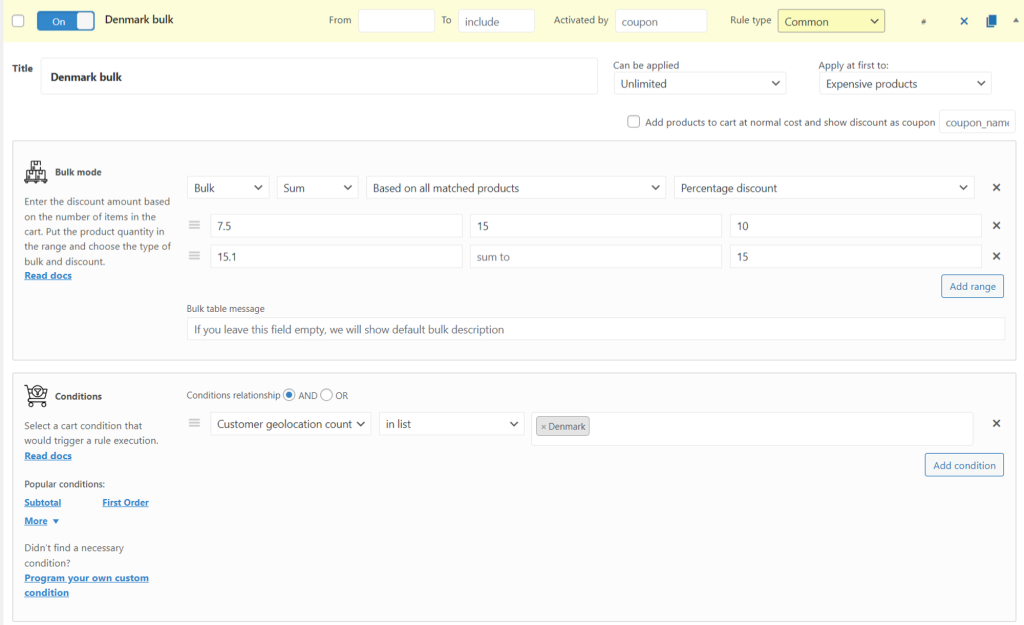How to set different price based on country
Table of Contents
In the dynamic world of e-commerce, personalized pricing strategies have become a key driver of competitiveness and profitability. One particularly effective approach is using geographic data to tailor prices according to regional factors. This article explores the significance of using geographic data in dynamic pricing and provides insights into implementing this strategy on WooCommerce, one of the leading e-commerce platforms.
Understanding Geographic Data in Dynamic Pricing
Geographic data refers to information that identifies the location and characteristics of natural or constructed features on the Earth’s surface. In the context of dynamic pricing, it includes factors such as:
Market Demand: Demand for products or services can vary significantly across different regions due to factors like population density, income levels, cultural preferences, and local economic conditions.
Competitive Landscape: Local competitors, market saturation, and pricing strategies employed by competitors in specific regions influence the pricing decisions of e-commerce businesses.
Regulatory Environment: Legal and regulatory differences between regions, such as taxes, tariffs, and shipping regulations, impact pricing and profit margins.
Adapting Prices to Regional Features on WooCommerce
- Geolocation Tools Integration: Integrating geolocation tools into your WooCommerce store allows you to identify the location of website visitors accurately. By knowing the geographic location of users, you can customize the pricing displayed to them based on their region.
- Market Research and Analysis: Conduct thorough market research to understand the unique characteristics and demands of different regions. Analyze demographic data, consumer behavior patterns, and competitor pricing strategies to inform your pricing decisions.
- Dynamic Pricing Rules: Implement dynamic pricing rules that take geographic data into account. For example, you can set rules to adjust prices based on the cost of living index, local currency fluctuations, or demand-supply dynamics specific to each region.
- Targeted Promotions: Use geographic data to create targeted promotional campaigns tailored to specific regions. Offering discounts, promotions, or incentives that resonate with the preferences and needs of local customers can boost sales and customer loyalty.
How to do it in Advanced Dynamic Pricing?
Change the terms of the wholesale discount for each country. To do this:
- Find out the current exchange rate to adjust the required amount for the discount. For example, the buyer must have a purchase worth 50 US dollars. To convert this to Danish kroner, you need to do a mathematical calculation: 50 * 0.15 = 7.5, where 0.15 is the ratio of the krone to the US dollar.
- Specify the country in the Conditions section. In our example, we do not specify a filter for products so that the discount applies to the entire store.



- Monitoring and Optimization: Continuously monitor the performance of your dynamic pricing strategies across different regions. Analyze sales data, customer feedback, and market trends to identify opportunities for optimization and refinement.
Note: in this case, you can use Advanced Order Export for WooCommerce. Read more about setting up this plugin there.
Benefits of Geographic-Based Dynamic Pricing
Improved Competitiveness: Adjusting prices to reflect regional demand and competition, businesses can stay competitive and capture market share more effectively.
Enhanced Customer Experience: Personalized pricing based on regional preferences enhances the customer experience, leading to higher satisfaction and repeat purchases.
Maximized Profitability: Optimizing prices according to regional factors enables businesses to maximize profitability by capturing value where demand is highest and adjusting prices where necessary.
Conclusion
In the era of data-driven decision-making, geographic data in dynamic pricing has emerged as a powerful strategy for e-commerce businesses operating on platforms like WooCommerce. By understanding regional features, adapting pricing strategies accordingly, and harnessing the capabilities of modern technology, businesses can gain a competitive edge, enhance customer satisfaction, and drive sustainable growth in the global marketplace.



